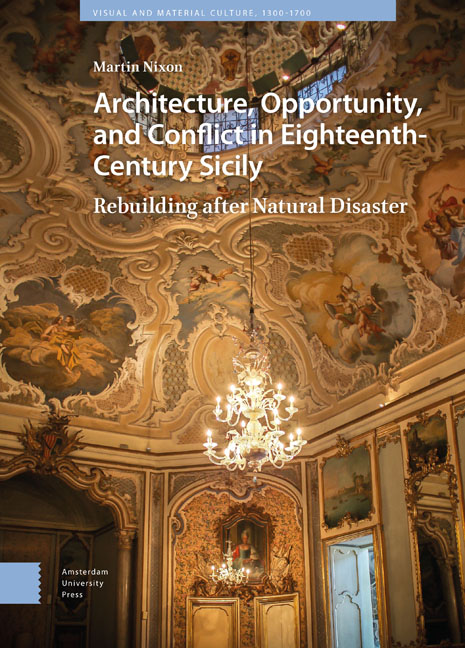 Architecture, Opportunity, and Conflict in Eighteenth-Century Sicily
Architecture, Opportunity, and Conflict in Eighteenth-Century Sicily Published online by Cambridge University Press: 24 November 2023
Abstract: Palace facades in the south-eastern Sicilian towns of Scicli, Modica, and Ragusa employ distinctive sculpture that suggests an iconological reading whilst continually eluding it. On the Palazzo Cosentini and the Palazzo La Rocca in Ragusa, musicians, revellers, and grinning, louche figures watch from below the balconies. The sculpture seems to mock, puzzle, or delight the passer-by. It can be celebratory and humorous, full of abundance and pleasure, but there is also ugliness, poverty, and hunger. Its depiction of the populace as louche and buffoonish has parallels with the characters of eighteenth-century commedia dell’arte and grotesque dance, where the supposed sensuousness and lack of sophistication of the poor is set against the grace and self-control of the aristocracy.
Keywords: architectural ornament, Sicilian palaces, eighteenth-century architecture, architecture and dance, commedia dell’arte, Southern Italy.
Facades and the Strange Mirror of the Poor
Many Val di Noto palace facades deploy complex aporic decoration, but the palaces in the Contea di Modica towns of Scicli, Modica, and Ragusa have a distinctive sculptural repertoire that suggests a localised iconography but remains enigmatic. On the facades of the Palazzo Cosentini and the Palazzo La Rocca in Ragusa, musicians, revellers, and louche, grinning figures watch from below the balconies (Fig. 6.1). The carvings are sometimes close enough to street level for the passer-by to reach up and touch. They inhabit the palace but interact with the street outside, housed within the stone but seemingly always aware of the life that passes before them. Some motifs reproduce and mutate across different facades as the mensole emulate and compete with each other. There is music, dissipation, and the fleeting, sensual joys of life, but there is also ugliness, poverty, and famine.
Other parts of the facades, such as the windows and portals, deploy a decoration more in dialogue with designs from international treatises, but the mensole carvings have little of a clearly religious or classical tradition. The balconies are reserved for a different kind of sculpture. Many of these palace facades therefore have both a classical face and another, more defiantly local one.
This sculpture could be read as a leftover from an earlier, medieval tradition of marginalia and gargoyles, a persistent idiosyncratic wart on a classical face. However, medieval marginalia can often still be related iconographically to textual references.
To save this book to your Kindle, first ensure [email protected] is added to your Approved Personal Document E-mail List under your Personal Document Settings on the Manage Your Content and Devices page of your Amazon account. Then enter the ‘name’ part of your Kindle email address below. Find out more about saving to your Kindle.
Note you can select to save to either the @free.kindle.com or @kindle.com variations. ‘@free.kindle.com’ emails are free but can only be saved to your device when it is connected to wi-fi. ‘@kindle.com’ emails can be delivered even when you are not connected to wi-fi, but note that service fees apply.
Find out more about the Kindle Personal Document Service.
To save content items to your account, please confirm that you agree to abide by our usage policies. If this is the first time you use this feature, you will be asked to authorise Cambridge Core to connect with your account. Find out more about saving content to Dropbox.
To save content items to your account, please confirm that you agree to abide by our usage policies. If this is the first time you use this feature, you will be asked to authorise Cambridge Core to connect with your account. Find out more about saving content to Google Drive.